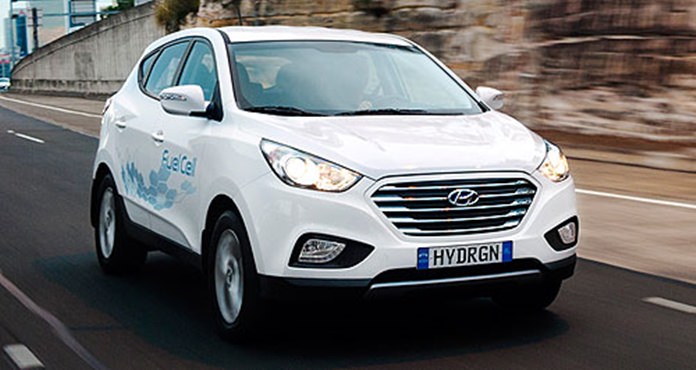It was Jules Verne, who in 1874 wrote, “water will one day be employed as fuel, that hydrogen and oxygen of which it is constituted will be used.” He certainly was ahead of his time!

However, let us not forget the hydrogen filled Zeppelin LZ1 in 1900, but it was not until 1966 that General Motors presented the Electrovan, the world’s first fuel cell automobile.
Just this year, Toyota revealed their Mirai hydrogen vehicle and Hyundai was not far behind with their ix35.
Following the Australian Capital Territory advance order of 20 Fuel Cell Electric Vehicles (FCEV) from Hyundai for 2018, Hyundai Australia PR boss, Bill Thomas has said, “We’ll bring the car in from 2018, whether that is fleet, government or private customers. Obviously it will be in limited numbers, as the infrastructure to refuel cars is yet to be built,” he said. “It’s one of those chicken-and-egg situations where you need the refueling stations before you need the cars. In this case, there’s this terrific Siemens refueler that can refuel up to 1,000 cars every year.”
One of the objections has been the idea that the electricity comes from coal, and therefore a “dirty” source. However, the energy for these vehicles will come from construction of a wind farm that will have the capacity to power up to 1000 FCEVs a year from 105 wind turbines traveling an average of 14,000 km per year.
The current Hyundai ix35, and future FCEV, work by converting hydrogen and oxygen into electricity, with water being the only by-product emitted from its exhaust pipe.
For the ix35, compressed hydrogen is stored in its hydrogen fuel tank before being pumped to a fuel-cell stack located under the bonnet, where it mixes with oxygen drawn in through the front of the car and is then converted to electricity.
This energy then supplies the single electric induction motor at the front axle in real time, producing 100 kW and 300 Nm to power the front wheels.
Hyundai claims it can do 0-100 km/h in 12.4 seconds, and hit a top speed of 160 km/h.




